Writers: Zak Penn, Ernest Cline (screenplay), Ernest Cline (novel)
Cast: Tye Sheridan, Olivia Cooke, Ben Mendelsohn, Mark Rylance, Lena Waithe, T.J. Miller, Simon Pegg
Cert: 12
Running time: 140mins
Year: 2018

What’s the story: 2045, Colombus, Ohio. In an over-populated world where trailer parks have become cities, the masses seek enjoyment in the virtual reality world of the OASIS (Ontologically Anthropocentric Sensory Immersive Simulation). Expert gamer Wade Watts (Sheridan) and others attempt to win a competition that awards them vast wealth and control of the OASIS. Evil corporate CEO Sorrento (Mendelsohn) unleashes an army to ensure no mere gamer wins the ultimate prize.
What’s the verdict: Tron. The Matrix. Ready Player One. Each generation gets the VR adventure story it deserves. And in our 80s pop-culture drenched, social avatar driven, digitally-experienced age, Ready Player One is just what we deserve.
Plus, with a coda reminding audiences that the real world can be worth a look too, it’s probably what we need. That deserve/need line is a steal from The Dark Knight’s closing monologue, demonstrating how pop culture is providing short cuts to everything. Whether it’s what we need right now, it’s certainly what we deserve, etc., etc.
Diving down deeper into the rabbit hole, The Dark Knight is a Warner Bros. property, as is Ready Player One. Meaning WB’s IP is well represented in Steven Spielberg’s adaptation of Ernest Kline’s pop-culture addled novel.
Tapping the desire to live an idealised version of yourself online, Ready Player One follows Wade Watts, online name Parzival (Sheridan). Derived from Parsifal or Percival, a knight who searched alone for the Holy Grail (everything references something else in this movie).
A gamer of note, Parzival is attempting to complete three challenges placed in the Oz-like OASIS by famed, reclusive designer Halliday, username Anorak (Spielberg’s current muse Rylance).
The late Halliday’s legacy is these three tests. If accomplished, each challenge unlocks a clue taking gamers further into the digital paradise. Whoever tops the scoreboard come the final contest will net themselves a cool half trillion dollars and full control of the OASIS and discover a fabled Easter Egg at the heart of game.
Parzival “doesn’t clan”, i.e. join any virtual gang. But, he is buddies with Aech (Waithe), a gamer and mechanic in the OASIS who custom builds vehicles and is working on a life-size Iron Giant (replacing the copyright entangled Ultraman from the book).
Parzival is also drawn to the similarly lone-wolfish Art3mis (Cooke), a gamer with the sass of Catwoman and the souped-up sports bike from Akira.
Threatening the fun is Nolan Sorrento (sneering villain of choice Mendelsohn), CEO of Innovative Online Industries. Craving control of the OASIS, Sorrento sees untapped riches in add-ons and pop-ups. To achieve this guaranteed revenue stream goal, he has an enslaved army to wipe out the competition.
For all its technical alchemy, Ready Player One is traditional wish fulfillment. The story matches the plot trajectory of Star Wars, Lord of the Rings, and Harry Potter. Or any other tale about a young, white male outcast who discovers they possess the ability to save the world. And get the girl. If there’s a sequel, let’s have it written from a female point of view.
The appeal comes from watching Steven Spielberg, the man who arguably invented modern pop culture along with his mate George, adapt Ernest Cline’s 2011 source novel (co-adapted here by the author with Zak Penn) and mess around with beloved characters.
Like someone flicking through a YouTube movie franchise search, Batman, Lord of the Rings, Chucky, Back to the Future, King Kong, Freddy Krueger, RoboCop and dozens more flit across the screen in digital panoramas brimming with pause-and-stare background detail.
Now as much a film historian as director, Spielberg may be commenting on the evolution (or devolution) of popcorn cinema. Most notably in a sequence of bleeding edge destruction centred around that most cinematic of spectacles, the car chase.
In the film’s best moment, the director condenses the multi-media legacy of a classic movie by friend Stanley Kubrick into a stunning, irreverent joyride.
Joyride is the key word for Ready Player One. There is plenty to debate about the IP filling the screen. About classic storytelling in a modern age. Pop culture expertise as social currency. Or tech corporations that milk and manipulate the masses (the Apple logo is conspicuous by its absence).
But, Spielberg has said all that is stuff happening out the side-windows. He wants you to focus on the adventure happening in front of the windscreen (sorry, windshield).
Happily, the adventure is told at brisk enough pace (even at 140mins) to make this a film that should outlast the cultural value of its myriad references. And entertain moviegoers now who don’t obsess over point-scoring trivia for that next online forum smackdown.
Particularly as the central contradiction here is that a film set in 2045 is obsessed with artefacts from the 1980s. Sonically as well as visually: Van Halen’s Jump kicks off proceedings, composer Alan Silvestri references his own Back to the Future score, A-Ha’s Take On Me gets a look-in.
[su_youtube url=”https://www.youtube.com/watch?v=D_eZxSYRhco”]
They say sci-fi is a commentary on the time it is in rather than a prediction of the future. Never was this truer than with Ready Player One. In the film’s world nothing culturally significant seems to have occurred in thirty years and apparently little released in the noughties holds as much cachet as Back to the Future’s DeLorean. Not even Warner Bros. own Harry Potter.
Less surprisingly, WB’s The Matrix is not directly name checked. Presumably it would be too on the nose to reference something this film basically remembers for you wholesale.
Spielberg also sidesteps Avatar-itis (that annoying condition where a film is forced into an uncanny valley) by nimbly working reality into the OASIS. A subplot about a real-world uprising against the tyrannical IOI corporation builds screen time momentum, so by the final hour the action is split between grimy, granite reality (actually Birmingham, UK) and day-glo candy coloured virtual plains.
Characterisation is set at Super Mario Kart level, with any engagement largely due to the acting chops of the cast. Rylance, in a part originally intended for Willy Wonka himself Gene Wilder, delivers the BFG remoulded as a benign Steve Jobs. Sheridan is charismatic enough not to evaporate entirely in a Mary-Sue role, and Mendelsohn cannot help but be hissable fun as the big bad. T.J. Miller gives good henchman as i-Rok, while there is a nod to the TV series Spaced (and its mention in the book) in the casting of Simon Pegg in a minor role.
Watts/Parzival’s digital compadres are thinly sketched, only Olivia Cooke’s Art3mis making an impression. Although a real-world disfigurement that she is free of in the OASIS is laughably slight compared to how brave the film thinks it is.
Ready Player One’s main character is ultimately Steven Spielberg himself. Deploying his full arsenal (including staging a set-piece with sound effects only, then again with score for different emotional effect), the master filmmaker has a ball with the train set he has been given. Even if his own work is pretty much restricted to an extended T-Rex cameo for fear of “vanity” accusations.
Steve may have let discipline fly out the window with this one. Yet, the infectious sense of fun extends to passionately debating his movie when stumbling out the cinema. And, hitting the blogosphere to add that all-important discipline-free opinion to the digital typhoon that will surround this movie.
Rob Daniel
Twitter: rob_a_Daniel
iTunes Podcast: The Electric Shadows Podcast
[su_youtube url=”https://www.youtube.com/watch?v=LiK2fhOY0nE”]

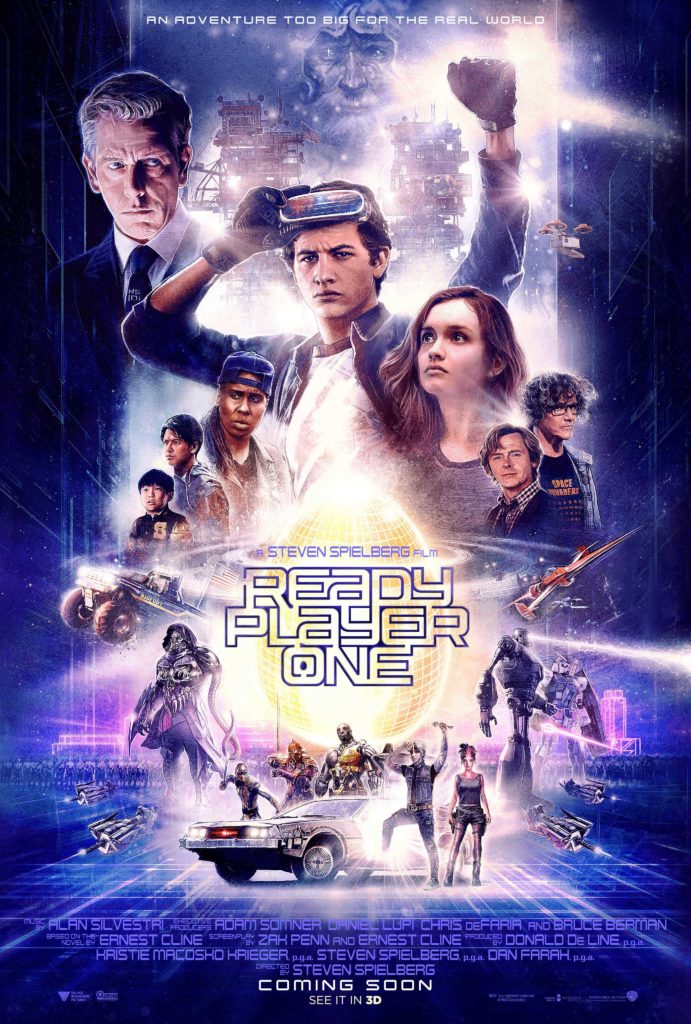
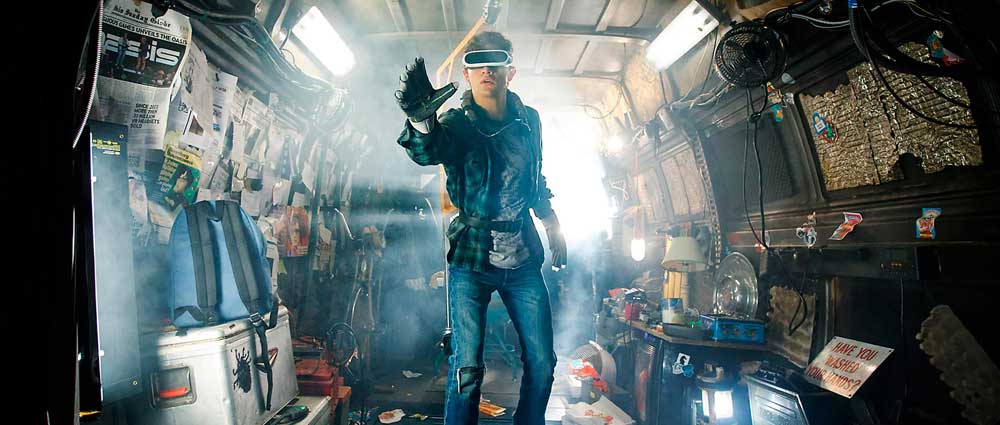
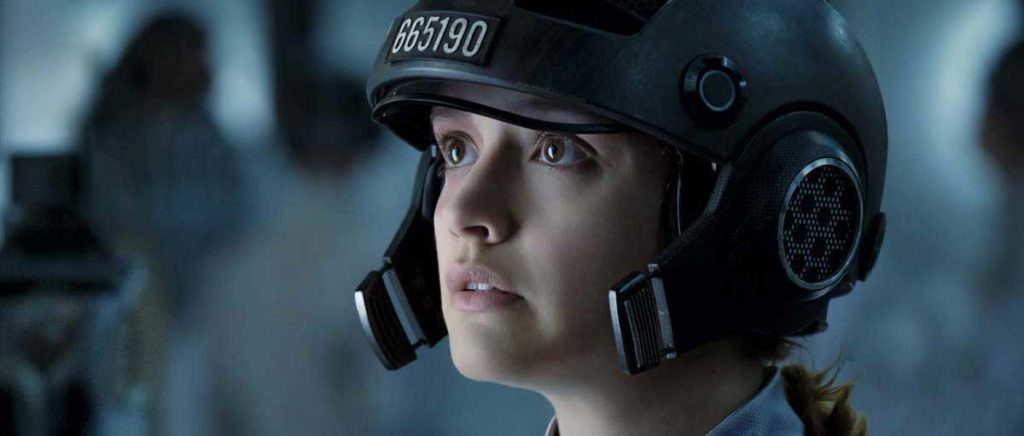
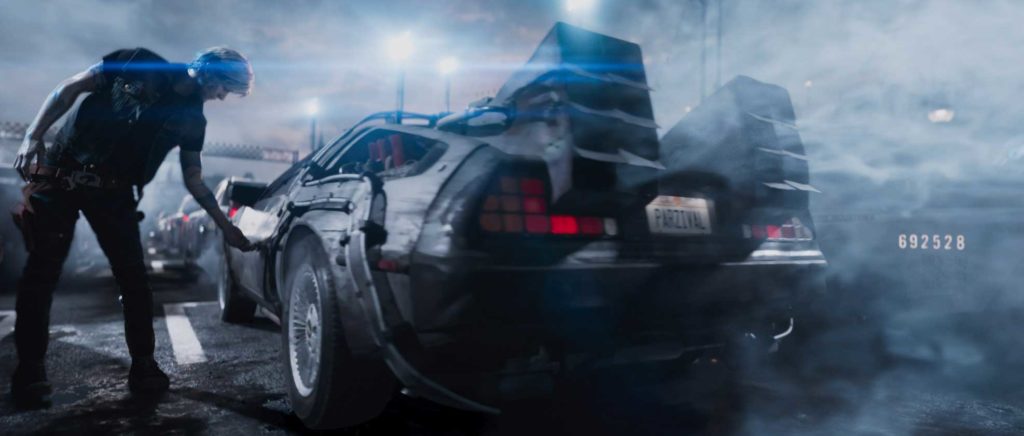
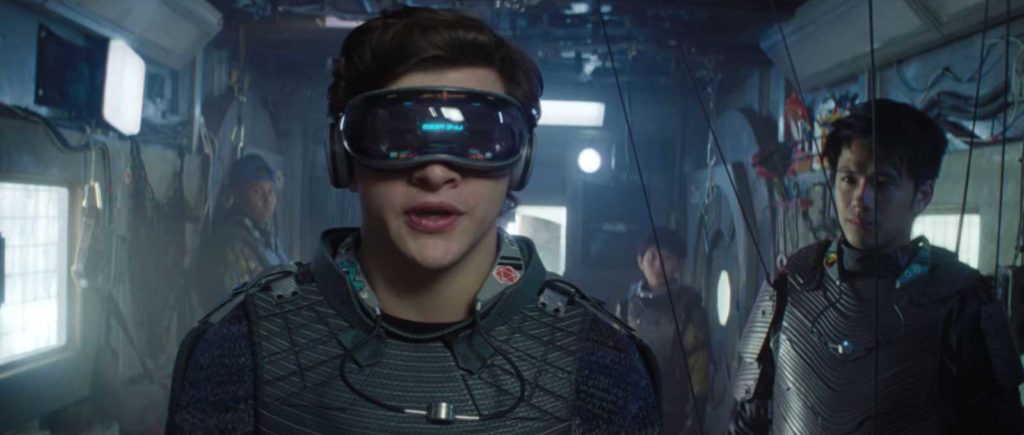
Pingback: Space Jam: A New Legacy... we didn't like it, hear why...
Pingback: Ready Player One & Annihilation - The Electric Shadows Podcast